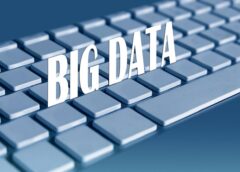Big data is not only for multinationals or large enterprises. Small and medium-sized businesses can also benefit from and take advantage of powerful dataset analysis techniques. Do you want to know how? We will tell you.
Table of Contents
What Is Big Data?
According to experts, three things help us define big data: volume (2.5 exabytes of data per day), speed (at which data is generated and integrated into systems), and variety (from photos of your pet in Instagram to stock quotes). In addition, there are two additional factors: the accuracy and value of the data.
Technical definitions aside, big data is simply a term used to describe the large set of data that comes from traditional or digital sources, inside or outside your company. We can say that big data is like a universe of dispersed data that, when correlated, contains precious information. Information that you can use to make strategic decisions that contribute to the evolution of your business.
How To Take Advantage Of Big Data For Your SME?
Indeed, small and medium-sized companies do not own as much data as large corporations, not to mention resources, but that does not mean that they cannot enjoy the benefits of big data. Thanks to the cloud, today, the most cost-effective extensive data collection and analysis solutions are available in software as a service (SAS) mode and are aimed at small businesses.
Also, keep in mind that the importance of big data lies not only in quantity but in the way companies use that data. Knowing where to look and, more importantly, what to look for, there are many ways for SMBs to collect, analyze, and draw valuable insights from the data they already have.
Here are three practical examples :
Learn More About Your Clients
We tend to think that we know our target audience, but experience tells us that what we imagine is often very far from reality. However, the data and analytical tools available can help companies to more fully and comprehensively profile their customers (current and potential), know their preferences, understand where they are from or even what they think.
By analyzing website visits, social media, and transaction history, you can know who is buying your products and predict future trends.
“Hey,” what Do The Networks Say About You
Social networks are a valuable means of gathering information, whether through mentions about your company or product, comments on positive experiences, or customer complaints. By analyzing this unstructured data (through language and sentiment analysis), it is possible to obtain valuable information about what actions you should take next, such as improving a specific aspect of your product or improving your customer service. Client.
Networks are also an excellent way to determine what your competition is doing and what consumers think about it. All this will help you identify the space that your product can occupy.
Use The Analysis Tools Of Your Management Software
If you use cloud management and billing software, you are already collecting some elements of big data. In the case of sales, think about what kind of data you can get: what products were sold, how many when they were bought, what payment method was used.
Using your management software’s data analysis and business insights tools, you can discover trends in your sector. For example, if there are products that sell more during the holidays or the weekend, or what combinations of products sell better together. This type of information can help you plan your orders, manage inventory more efficiently, and even prepare specific marketing campaigns.




